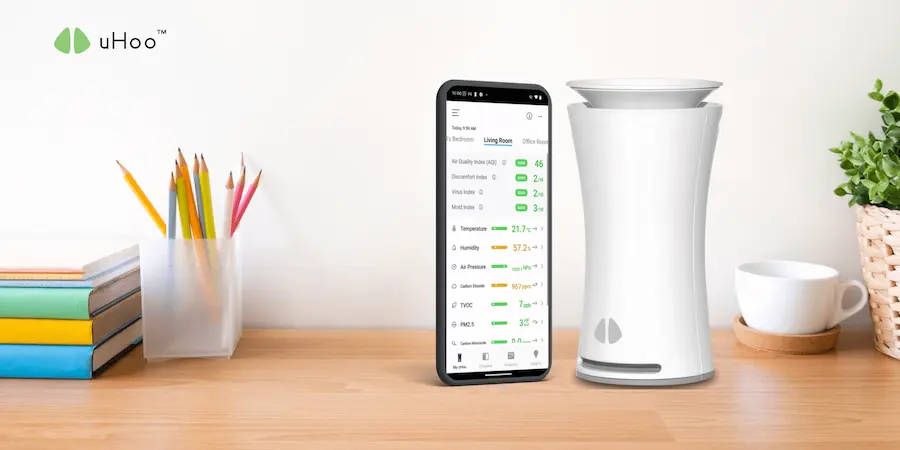Did you just get a uHoo air quality monitor? That’s fantastic! You’re taking a big step towards understanding and improving the air you breathe every day. But how do you actually use it to truly benefit your health? Don’t worry, it’s simpler than you think!
Here’s your beginner’s guide to using your uHoo air quality monitor for better health:
- Placement is Key:
- Main Living Area: Start by placing your uHoo air quality monitor in the room where you spend the most time, like your living room or bedroom.
- Avoid Extremes: Don’t put it right next to a window, a vent, a direct fan, or in direct sunlight. These spots can give you inaccurate readings. Keep it on a table or shelf in the middle of the room if possible.
- Consider Other Rooms: Over time, you might want to move it to a child’s room, kitchen (during cooking), or any area where you suspect air quality issues.
- Understand the Readings:
- Your uHoo monitors 9 different air quality factors. Don’t be overwhelmed! Focus on the main ones first:
- PM2.5 (Fine Dust): Invisible tiny particles from dust, smoke, cooking, or even outdoor pollution. High levels can irritate lungs.
- VOCs (Chemicals): Gases from cleaning products, paints, new furniture, perfumes. Can cause headaches or irritation.
- CO2 (Carbon Dioxide): Builds up from breathing in poorly ventilated rooms. High levels can make you feel sleepy or less focused.
- Temperature & Humidity: Crucial for comfort and preventing mold in our tropical climate.
- The uHoo app uses a simple color-coded system (green, yellow, red) and an overall “uHoo Air Quality Index” to make it easy to understand if your air is good or needs attention.
- Your uHoo monitors 9 different air quality factors. Don’t be overwhelmed! Focus on the main ones first:
- Identify Patterns and Triggers:
- After a few days, look at the historical data in the uHoo app. Do CO2 levels spike when you have guests? Do VOCs rise when you clean? Does PM2.5 increase when you cook?
- Notice if your allergies or cough get worse when certain pollutant levels are high. Your uHoo air quality monitor helps connect the dots between your air and your health.
- Take Action (and see the results!):
- If CO2 is high: Open a window for a few minutes to bring in fresh air.
- If VOCs are high: Ventilate, and consider switching to eco-friendly cleaning products.
- If PM2.5 is high: Use an air purifier, especially during cooking or if outdoor air quality is poor. Ensure your AC filters are clean.
- If Humidity is high: Use a dehumidifier, improve ventilation, and fix any leaks to prevent mold.
- See the numbers change! Your uHoo will show you the immediate impact of your actions, which is incredibly satisfying and empowering.
By following these steps, your uHoo air quality monitor becomes more than just a device. It becomes your personal health tool, guiding you to make informed decisions for a healthier life.



